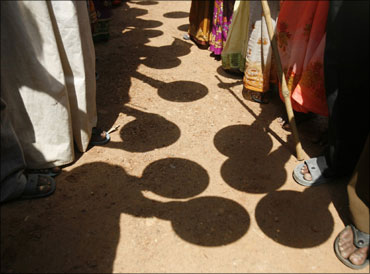
Acute poverty prevails in eight Indian states, including Bihar, Uttar Pradesh and West Bengal, together accounting for more poor people than in the 26 poorest African nations combined, a new 'multidimensional' measure of global poverty has said.
The new measure, called the Multidimensional Poverty Index (MPI), was developed and applied by the Oxford Poverty and Human Development Initiative with UNDP support.
It will be featured in the forthcoming 20th anniversary edition of the UNDP Human Development Report.
An analysis by MPI creators reveals that there are more 'MPI poor' people in eight Indian states (421 million in Bihar, Chhattisgarh, Jharkhand, Madhya Pradesh, Orissa, Rajasthan, Uttar Pradesh, and West Bengal) than in the 26 poorest African countries combined (410 million).
The new poverty measure that gives a multidimensional picture of people living in poverty, and is expected to help target development resources more effectively, its creators said.
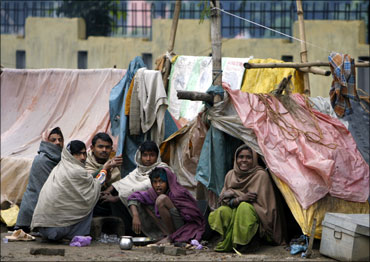
The MPI supplants the Human Poverty Index, which had been included in the annual Human Development Reports since 1997.
The 2010 UNDP Human Development Report will be published in late October, but research findings from the Multidimensional Poverty Index were made available on Monday at a policy forum in London and on line on the websites of OPHI and the UNDP Human Development Report.
The MPI assesses a range of critical factors or 'deprivations' at the household level: from education to health outcomes to assets and services.
Taken together, these factors provide a fuller portrait of acute poverty than simple income measures, according to OPHI and UNDP.
The measure reveals the nature and extent of poverty at different levels: from household up to regional, national and international level.
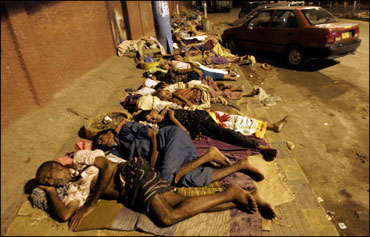
This new multidimensional approach to assessing poverty has been adapted for national use in Mexico, and is now being considered by Chile and Colombia.
"The MPI is like a high resolution lens which reveals a vivid spectrum of challenges facing the poorest households," said OPHI director Dr Sabina Alkire, who created the MPI with Professor James Foster of George Washington University and Maria Emma Santos of OPHI.
The UNDP Human Development Report Office is also joining forces with OPHI to promote international discussions on the practical applicability of this multidimensional approach to measuring poverty.
"We are featuring the Multidimensional Poverty Index in the 20th anniversary edition of the Human Development Report this year because we consider it a highly innovative approach to quantifying acute poverty," Dr Jeni Klugman, director of the UNDP Human Development Report Office and the principal author of this year's report, said.
"The MPI provides a fuller measure of poverty than the traditional dollar-a-day formulas.
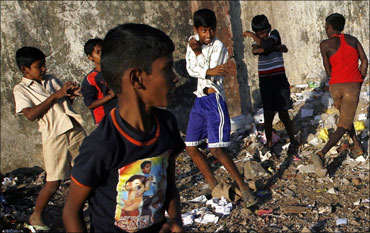
It is a valuable addition to the family of instruments we use to examine broader aspects of well-being, including UNDP's Human Development Index and other measures of inequality across the population and between genders.
OPHI researchers analysed data from 104 countries with a combined population of 5.2 billion (78 per cent of the world total).
About 1.7 billion people in the countries covered -- a third of their entire population -- live in multidimensional poverty, according to the MPI.
This exceeds the 1.3 billion people, in those same countries, estimated to live on $1.25 a day or less, the more commonly accepted measure of 'extreme' poverty.
The MPI also captures distinct and broader aspects of poverty.
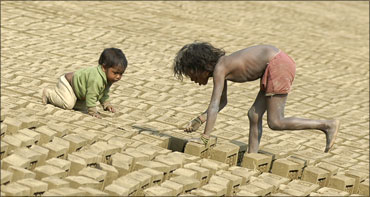
For example, in Ethiopia 90 per cent of people are 'MPI poor' compared to the 39 per cent who are classified as living in 'extreme poverty' under income terms alone.
Conversely, 89 per cent of Tanzanians are extreme income-poor, compared to 65 per cent who are MPI poor. The MPI captures deprivations directly -- in health and educational outcomes and key services, such as water, sanitation and electricity.
In some countries these resources are provided free or at low cost; in others they are out of reach even for many working people with an income.
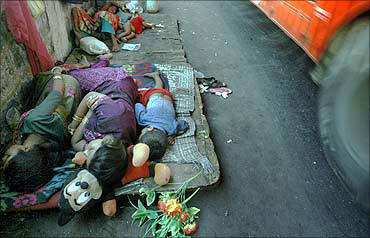
Half of the world's poor as measured by the MPI live in South Asia (51 per cent or 844 million people) and one quarter in Africa (28 per cent or 458 million).
Niger has the greatest intensity and incidence of poverty in any country, with 93 per cent of the population classified as poor in MPI terms.
The MPI also reveals great variations within countries: Nairobi has the same level of MPI poverty as the Dominican Republic, whereas Kenya's rural northeast is poorer in MPI terms than Niger.
The recently released 2010 UN Millennium Development Goals Report stressed that the MDGs will be fully achieved only by addressing the needs of those most disadvantaged by geography, age, gender or ethnicity, OPHI researchers point out.